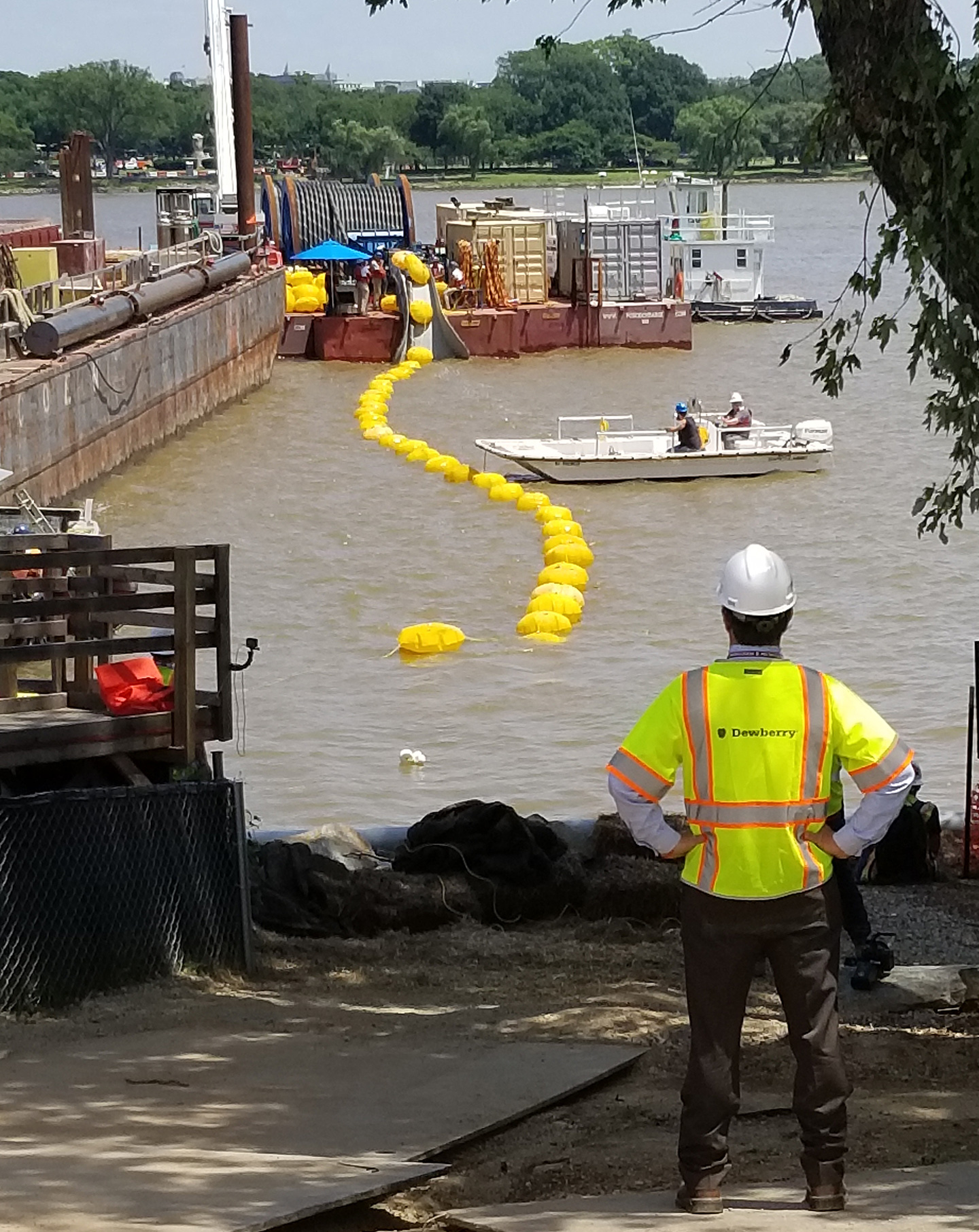The more than 400-mile Potomac River flows from the Potomac Highlands in West Virginia, all the way to the Chesapeake Bay, which is bordered by Washington, D.C., Maryland, Virginia, and Delaware. In 2018, a high voltage cable crossing the Potomac between
the National Mall and the George Washington Memorial Parkway failed. Our team provided survey, alternatives analysis, assistance for installation of temporary power, design and permitting services, construction administration, and coordination for
the cable pull for the restoration of the high voltage cable.
Adding to the need to restore the cable, we identified during the failure assessment that the substations would need temporary power. While alternative power sources were selected for these impacted areas, we were working on a limited timeline because
those temporary solutions were just that—temporary.
Considering Alternatives
Working with the utility company, we provided an alternatives analysis to find the best way to route a new cable across the Potomac River. Multiple options were discussed and reviewed, including a new submarine cable installation, horizontal directional
drilling under the river, a new overhead line across the river, and crossing on an existing bridge to the north of the crossing.
In the end, it was decided that a new submarine cable was to be installed. However, this came with its own challenges.
- The new submarine cable would require transitions from the old cable type to the new. A new transition splice would be complex and require a lot of real estate for the manhole.
- Manufacturing the cable and shipping required a long lead time. With an in-service date of October 2019, the cable would need to be ordered during the design phase of the project.
- Permitting would also be a challenge due to the short turnaround time. The civil contractor would need to start construction in April 2019–just five months from the decision to install a new cable.
Deciding on a Solution and Moving Forward
We quickly pulled together a team with the right experience to plan and implement a holistic design and permitting strategy, including our surveyors in Baltimore and Lanham, Maryland, our civil engineering group in Baltimore, and our floodplain team in
Fairfax, Virginia.
Over the years, our team has worked with this utility provider to become familiar with their system and how it all works together. This knowledge allowed us to work and obtain close relationships with their underground transmission team, civil contractors,
electrical engineers, and cable manufactures, which led to a coordinated design, ultimately resulting in a more streamlined construction phase and compliance with the electrical design.

We were able to quickly coordinate the needs for the transition splice connecting the new cable to the existing cable. The transition splice required a large manhole to be installed on either side of the river. In this case, two 42-by-10-foot manholes,
roughly the size of a school bus. Coordinating with the contractor allowed us to know their needs for the design, including space not only for the manhole itself, but the sheeting and shoring and crane that would be required for a non-typical installation.
The Potomac River rapid response and up-front total project strategy put in place by the utility and our team helped steer the project from start to finish with the high voltage cable back in service."
Chris Petrocelli
Working with the cable manufacturer and electrical engineers allowed us to know the needs of the electrical design. A preliminary design was completed to provide cable cut lengths with very little available information allowing the cable to be ordered
in December 2018.
We worked with each jurisdiction to provide permitting within a short window. High voltage cable installations and permitting are not typical for most jurisdictions–including across a major river. They had to know what we are doing and why. This
coordination can sometimes be slow and inefficient. Having strong relationships with many of these jurisdictions, we were able to provide answers and resources leading to a smooth permitting process and allowing for construction to begin on time in
April 2019.
The Potomac River rapid response and up-front total project strategy put in place by the utility and our team helped steer the project from start to finish with the high voltage cable back in service by September 2019. Understanding the complexities of the
utilities product and service delivery needs and the requirements of each jurisdiction allowed us to differentiate ourselves as a consulting engineer capable of a broad range of quality services in a high-risk context.